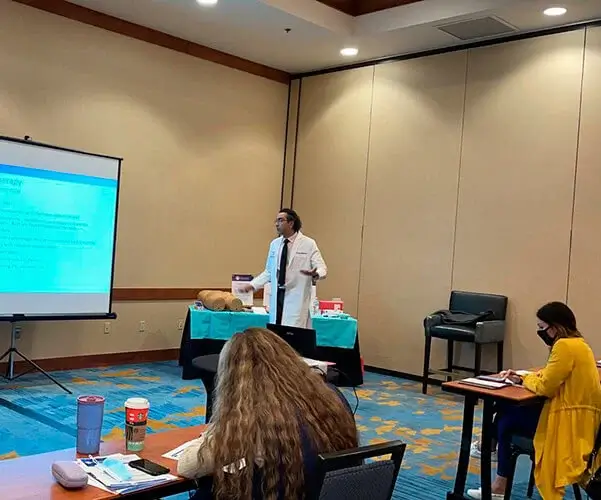Bioidentical Hormone Training for Nurse Practitioners
By Dr. Stephen Cosentino
PRESIDENT OF EMPIRE MEDICAL TRAINING
Bioidentical hormone replacement therapy (BRHT) traces its roots back to the late 1980s, when advances in hormone synthesis made it practical and cost-effective to administer natural hormones at scale.
This evidence-based treatment protocol improves upon the synthetic hormone therapies that were previously the standard of care for anti-aging treatment. Just as it’s increasingly accessible for everyday men and women looking to regain the energy and drive of youth, it’s available to a widening range of providers as well — including nurse practitioners, physician assistants, and registered nurses working under physician supervision.
If you’re a nurse practitioner looking to broaden your skillset, or an aesthetic or medical practice operator eager to empower midlevel providers on your staff, bioidentical hormone training for nurse practitioners could be a great investment in your practice.
What to Expect From Bioidentical Hormone Training — Course Objectives and Topics
Bioidentical hormone training is often offered as a component of more comprehensive anti-aging training courses. These courses may be offered online, in-person, or in a hybrid learning environment.
Regardless of format, they should come with an extensive archive of digital learning materials that participants can reference at their convenience. These may include prerequisite modules that participants need to complete before attending.
Bioidentical Hormone Training for Nurse Practitioners — Course Objectives
Comprehensive courses around bioidentical hormone replacement therapy should prepare nurse practitioners to:
- Evaluate patients presenting with age-related complaints
- Manage patient intake and gather informed consent
- Assess patients’ suitability for hormone replacement therapy
- Determine if any significant contraindications exist and educate unsuitable patients about alternative treatment options
- Prescribe and manage courses of bioidentical hormone treatment
- Monitor for complications and follow up with patients as needed
- Stay on top of the medical literature around hormone replacement therapy
Bioidentical Hormone Training for Nurse Practitioners — Topics Covered
Bioidentical hormone training modules should cover a range of practical topics to prepare practitioners for encounters with real-world patients:
- The pathology of aging and hormone loss
- The differences between synthetic and bioidentical hormone treatments
- Complaints associated with low levels of estrogen, testosterone, and other key hormones, such as weight gain, chronic fatigue, depression, bone density loss, low libido, and sexual dysfunction
- Symptoms of andropause and post- and perimenopause, such as night sweats, ovarian cysts, uterine fibroids, and menstrual irregularities
- Pre-treatment hormone testing and test analysis
- Treatment planning and individualization around specific patient objectives, such as weight loss or higher energy levels
- Training in hormone delivery methods, such as hormone pellet therapy
- Complementing bioidentical hormone therapy with other anti-aging therapies
More About Bioidentical Hormone Therapy — Considerations and Cautions
Bioidentical hormone therapy is an evidence-based pillar of functional medicine, but it’s not appropriate for all patients. After completing their certification program, medical practitioners who supervise hormone replacement therapies should feel confident in assessing prospective patients’ risk factors before beginning treatment.
Specifically, nurse practitioners should be prepared to:
- Interpret hormone test results to determine whether the patient is a good fit for bioidentical hormone replacement
- Assess the patient’s overall health and risk factors, particularly for cardiovascular complications
- Provide individualized guidance around patient risks and steer toward alternative therapies when warranted
- Monitor the patient during treatment and schedule follow-up lab tests as needed
- Stop treatment if significant risks develop


